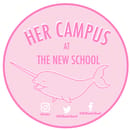Vivian Xue has earned herself the nicklname “the fairy godmother of nails” from her clients and for good reason. Xue is an artist who’s sharing her talent and inspiration with the beauty industry via her brick-and-mortar nail salon in Fremont, CA, Pamper Nail Gallery.
Her Campus: How did you get into the nail industry?
Vivian Xue: Social media brought nails to my attention. I’ve always seen myself as a creative problem solver, and I like how nail art marries structure with creativity, architecture with graphics. Nails are a very personal, feel-good art form. It’s art that you can take everywhere you go.
HC: Originally, your plan was to deliver the Pamper experience to customers by offering an in-home service. When did you decide to go brick-and-mortar and why?
VX: The original business model was one I was familiar with because I had just left an on-demand tech company focused on delivering at-home massage. It was a familiar model that I tried to apply to beauty services, but truthfully, I was unfamiliar with the needs of this very different industry. The ultimate switch to brick-and-mortar was a more effective solution to deliver a bespoke nail art experience. We designed a business model that caters to like-minded employees and clients who seek bespoke services.
HC: According to the Pamper website, most nail salons use MMA (Methyl Methacrylate), which is a harmful substance used to glue on acrylic tips. How can our readers ensure they’re going to a salon that’s safe?
VX: I would ask a lot of questions before visiting any salon. I would be wary of salons using products that are housed in unlabeled or unbranded bottles. They should show you that the bottle of nail liquid is EMA and not MMA.
HC: Could you describe the difference between EMA (ethyl methacrylate) and MMA?
VX: Both EMA and MMA refer to a type of monomer liquid that nail techs use to apply acrylic powder to nails. BOTH liquids look exactly the same. They are both purple tinted and don’t smell great. But the danger in MMA is that it’s not meant to be used on nails. 1. MMA doesn’t bond to natural nails well, so the nail tech is forced to etch deep grooves in the nail bed to make sure the acrylics don’t “pop off”. 2. MMA is bone cement, so when it actually sets, it’s much harder to remove from the natural nail than EMA (which is designed for natural nails). This is bad when you do need to remove those acrylics. 3. The biggest cause for FDA intervention with MMA was due to reports of adverse skin reactions to the liquid. Unusually high amounts of women were developing allergies to acrylic by way of excessive exposure to MMA. This includes skin rashes, blistering, and other symptoms.
HC: What should we look for when searching for a new salon (which I’m sure many of our readers will do after reading this interview!)
VX: Being educated on these issues is half the battle. First, ask the salon what line of products they use, how they sanitize their implements and pay special attention to suspicious unlabeled containers, or if the salon reuses nail files, pumices, buffers, etc. If the salon does acrylic enhancements, ask about the removal process. Any salon that rips your acrylics off versus soaking them off is not a salon that is interested in your nail health and your overall well being.
HC: Your salon is known for sculpting – could you tell us a little bit about the process? How do you create these stiletto-esque nails?
VX: Sculpting is the predecessor to glued nail tips, and the reason why we exclusively sculpt is because we believe in the elevated quality and longevity of the sculpted nail. Sculpting means we build the entire acrylic nail from acrylic (no shortcuts). This is good because 1. Nail tips and press-ons don’t fit everyone’s unique nail beds end to end (gaps are unavoidable). Sculptures are always perfectly fitted to each individual nail. 2. The nail is built straight, and therefore longer nail lengths don’t have to look curved (which tends to be unappealing to most people for both aesthetic and practical reasons). 3. Nail tips are artificially curved and plastic doesn’t like to stay that way long term. This creates premature lifting and easy breakage as opposed to a sculpted nail.
HC: What are your thoughts on cuticle removal? Some say it’s harmful. Is it?
VX: This is hotly debated because you have to be very careful about understanding where dead tissue stops and live tissue begins. It’s different from person to person. It’s very easy for someone to overdo it if [they’re] not properly trained, and it could open you up to the risk of more bacterial exposure. I like to make the analogy that liking your cuticles to be cut is to getting a silicone breast enhancement. Does it look good? It can. Is it healthy for you? Eh.
HC: Your salon doesn’t offer standard manicures or pedicures, why?
VX: We found that offering basic manicures and painting on natural nails attracted a different kind of customer from the ones we really wanted to attract. It was a business decision that optimized the talents of our artists and helped us get really good at a few things versus being mediocre at a higher quantity of things.
HC: What’s the weirdest design request you’ve received from a client?
VX: I think we specialize in weird, so there’s quite a few! We have done Charmin toilet paper nails, multiple requests for Hentai (Japanese anime porn) nails, Transformers Decepticons, the Mona Lisa—all in a day’s work here.
HC: Who inspires you/what inspires your art?
VX: I find ideas from anywhere. At the grocery store, I’ll see a cereal I like and automatically visualize it on nails. I can get nostalgic about an old movie and paint my favorite character on my nail. My favorite is flipping through an old fashioned picture encyclopedia of gems and minerals and seeing how we can replicate organic materials. We find that as a group, we don’t even look at other nails for inspiration, we try to look for anything around that we like and transform it into something we can wear.
HC: Is there anything else you’d like to tell our readers?
VX: I hope that those who are thinking ‘Wow, I could never get anything but plain solid colors on my nails,’ to give it one chance. Do some glitter! Try something new! The thing I love about nails is that it is for pure, personal enjoyment because no one’s going to be looking at it more than you.



